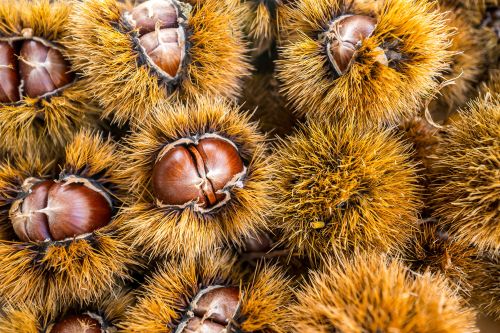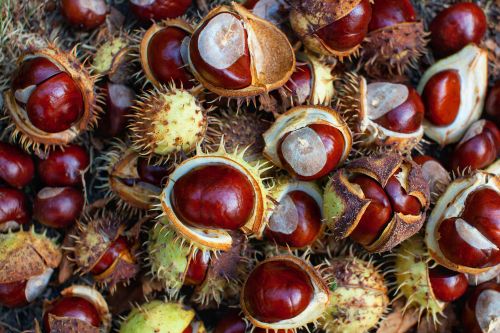
How to avoid confusing horse chestnuts with sweet chestnuts
The arrival of autumn often sees cases of horse chestnuts being mistaken for sweet chestnuts. Here we give you some tips on how to avoid this.
Although we commonly talk about "chestnuts", "candied chestnuts" and "chestnut purée" or "cream", we are actually only referring to a variety of large sweet chestnut grown for consumption!
Sweet chestnuts are edible, but horse chestnuts are poisonous. If eaten, they can cause digestive problems such as abdominal pain, nausea, vomiting and throat irritation.
More than one in 10 cases of poisonous plants being mistaken for edible plants involve horse and sweet chestnuts. This is the finding of our study on cases of mistaken identity involving plants (PDF) recorded by poison control centres from 2012 to 2018.
How can you distinguish horse chestnuts from sweet chestnuts?
Observe the shape of the nuts and of the "burr" (cupule) that encases them:

the sweet chestnut burr is brown and has numerous long bristly spines. It contains two to three nuts at a time, which are fairly small, flattened and triangular;

horse chestnut burrs are thick and green, with small, short, more widely spaced spikes, and generally contain only one larger rounded nut.
Look at the location of the trees:
- horse chestnut trees are generally found in cities, parks, alleys and school yards... while sweet chestnut trees tend to grow in woods, forests or groves.
Observe their leaves:
- each horse chestnut leaf consists of oval "leaflets", which give the whole leaf a palm-shaped appearance;
- sweet chestnut leaves are simple and elongated without leaflets.
What should you do in the event of poisoning?
- Keep meal leftovers or take photos of the nuts you pick for easier identification in the event of poisoning.
- In the event of symptoms of poisoning (abdominal pains, throat irritation, etc.), call a poison control centre or see a doctor.